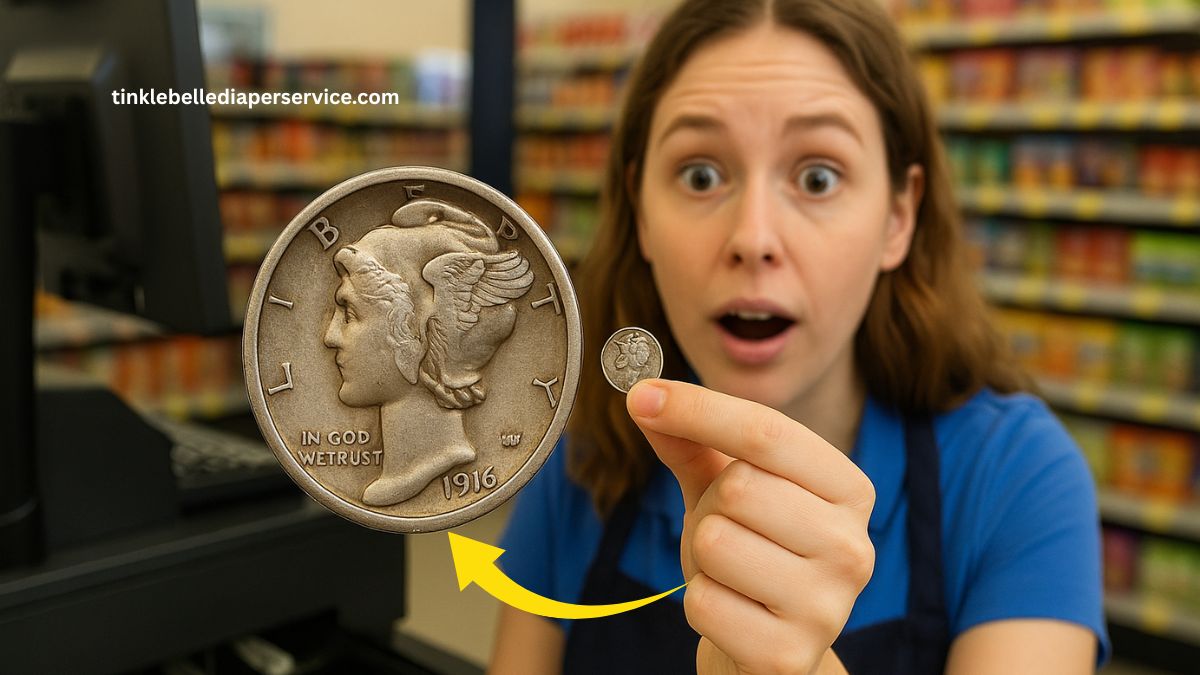A routine day at a local retail store turned extraordinary when a cashier discovered a 1916-D Mercury Dime in the till—an exceptionally rare coin valued at up to $12,000.
This unexpected find has ignited excitement among coin collectors and enthusiasts alike.
What Makes the 1916-D Mercury Dime So Valuable?
The 1916-D Mercury Dime holds a special place in numismatic circles due to its rarity and historical significance. Minted in Denver, only 264,000 of these dimes were produced, making it the lowest mintage of the Mercury Dime series.
Its scarcity, combined with the demand among collectors, significantly elevates its value.
1916-D Mercury Dime Value Chart
| Grade | Estimated Value (USD) |
|---|---|
| Good (G-4) | $1,350 – $2,000 |
| Very Fine (VF-20) | $3,500 – $4,500 |
| Extremely Fine (EF-40) | $5,500 – $7,000 |
| Mint State (MS-60) | $12,000+ |
| MS-67 Full Bands (FB) | $207,000+ |
Note: Values can vary based on market demand and coin condition.
Identifying a Genuine 1916-D Mercury Dime
To determine if you have a genuine 1916-D Mercury Dime:
- Obverse (Front): Features Lady Liberty wearing a winged cap, symbolizing freedom of thought.
- Reverse (Back): Depicts a fasces (a bundle of rods with an axe) and an olive branch, representing strength and peace.
- Mint Mark: Look for a small “D” mint mark on the reverse, to the left of the bottom of the fasces, indicating it was minted in Denver.
- Full Bands (FB): Coins with fully separated horizontal bands on the fasces are highly sought after and command premium prices.
Due to the high value, many counterfeits exist. It’s advisable to have the coin authenticated by reputable grading services like PCGS or NGC.
Historical Context of the Mercury Dime
The Mercury Dime, officially known as the Winged Liberty Head Dime, was minted from 1916 to 1945. Designed by Adolph A. Weinman, the coin’s obverse features a depiction of Liberty donning a winged cap, often mistaken for the Roman god Mercury—hence the nickname.
The reverse showcases a fasces and an olive branch, symbolizing America’s readiness for war and desire for peace.
The 1916-D issue is particularly notable due to its low mintage and the transition from the Barber Dime to the Mercury Dime design in that year.
Tips for Coin Enthusiasts
- Check Your Change: Rare coins can still be found in circulation. Regularly inspect your coins for unique dates and mint marks.
- Educate Yourself: Familiarize yourself with key dates and features of valuable coins to increase your chances of identifying them.
- Handle with Care: Use gloves when handling coins to preserve their condition and value.
- Seek Professional Appraisal: If you believe you’ve found a rare coin, consult with a professional numismatist or a reputable coin dealer for evaluation.
The discovery of a 1916-D Mercury Dime in a store’s cash register serves as a thrilling reminder of the treasures that can be hidden in plain sight.
Whether you’re a seasoned collector or a curious novice, keeping an eye out for rare coins like this can be both rewarding and exciting.
Always remember to handle potential finds with care and seek professional advice to ascertain their value.
FAQs
How can I verify the authenticity of a 1916-D Mercury Dime?
Look for the “D” mint mark on the reverse side, to the left of the fasces’ base. For confirmation, have the coin evaluated by professional grading services like PCGS or NGC.
What does “Full Bands” mean, and why is it important?
“Full Bands” refers to the distinct, fully separated horizontal bands on the fasces on the coin’s reverse. Coins with this feature are rarer and more valuable.
Are there common counterfeits of the 1916-D Mercury Dime?
Yes, due to its value, the 1916-D is frequently counterfeited. Some fakes involve adding a “D” mint mark to a 1916 Philadelphia dime. Always consult a professional for authentication.

